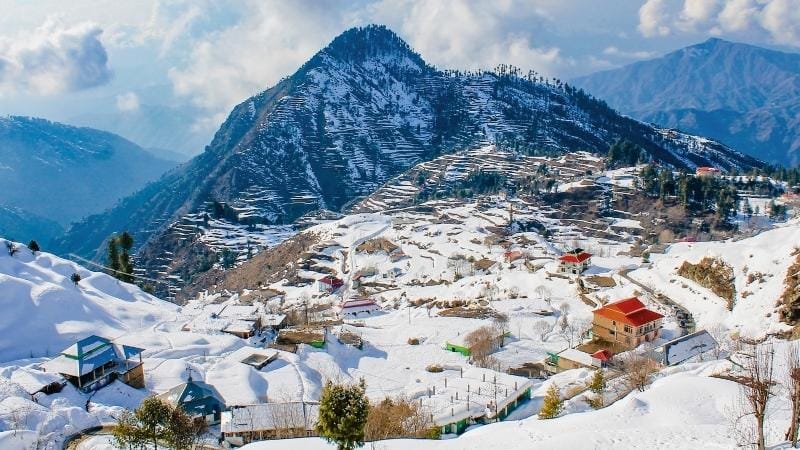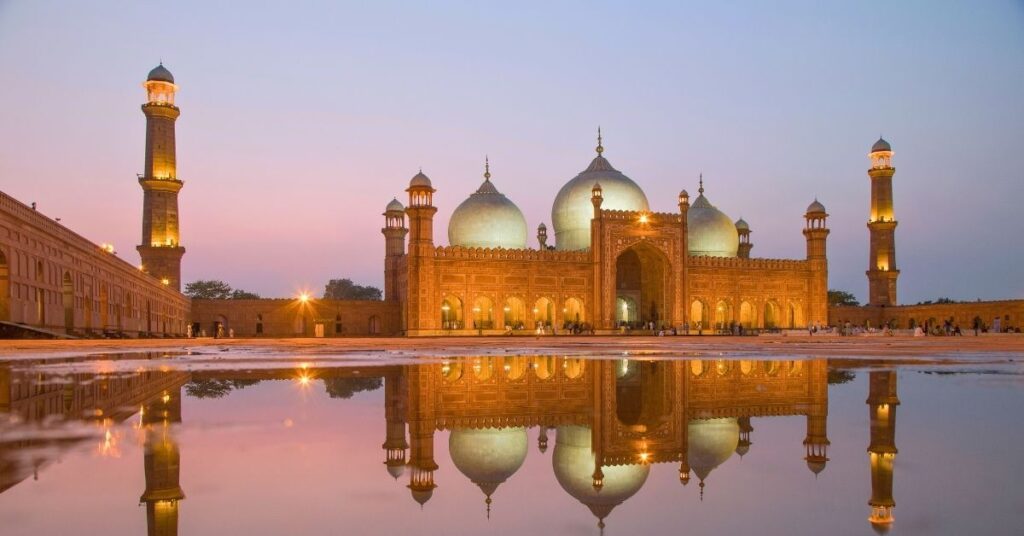Imagine a place where jagged, snow-dusted peaks pierce a sky of impossible blue, where emerald-green valleys are carved by ancient glaciers, and where the hospitality of the people is as warm as the sun on a high-altitude meadow. This is not a fairytale. This is Northern Pakistan.
Stretching across the mighty Karakoram, Hindu Kush, and Himalayan ranges, this region is a paradise for adventurers, a sanctuary for soul-searchers, and a treasure trove for cultural explorers. But with a land so vast and full of wonders—from the legendary peaks of Skardu to the vibrant culture of Chitral—the biggest question is: where do you even begin?
Consider this your definitive roadmap. We’ve structured this guide to be your ultimate travel planner, breaking down this magnificent region into its three core areas: Khyber Pakhtunkhwa, Gilgit-Baltistan, and Azad Kashmir. Let’s embark on the journey of a lifetime.
Part 1: Khyber Pakhtunkhwa (KP) – The Valleys of Green & History
Easily accessible from the rest of Pakistan, the valleys of KP are famed for their lush greenery, historical significance, and beautiful rivers.
Swat Valley: The Switzerland of the East
Once a cradle of Buddhist civilization, Swat is a stunning valley that blends rich history with breathtaking natural beauty. Its lower regions are filled with lush fields and bustling towns, while the upper reaches offer alpine meadows and snow-capped peaks.
Best For: Family trips, history enthusiasts, and accessible nature.
Recommended Places: Kalam Valley, Mahodand Lake, Madyan, Fizagat Park, and the ancient Buddhist stupas in Mingora.

Naran & Kaghan Valley: The Paradise
This is arguably the most popular tourist destination in Pakistan, and for good reason. The valley is a postcard-perfect landscape of serene lakes, pine-covered hills, and the rushing Kunhar River. It’s the quintessential mountain getaway.
Best For: Honeymooners, weekend getaways, and accessible high-altitude lakes.
Recommended Places: Lake Saiful Maluk, Lulusar Lake, Babusar Top (the pass connecting to Gilgit-Baltistan), Shogran, and Siri Paye Meadows.



Chitral Valley & The Kalash: A Land of Culture & Peaks
Bordered by the towering Hindu Kush mountains, Chitral is a remote and culturally rich region. It’s most famous for being home to the Kalash people, an ancient tribe with a unique polytheistic religion, vibrant festivals, and distinct traditions that have fascinated the world for centuries.
Best For: Cultural explorers, trekkers, and those seeking an off-the-beaten-path experience.
Recommended Places: Chitral town, Garam Chashma (hot springs), and the Kalash Valleys (Bumburet, Rumbur, Birir).
The Kalash Festivals: To witness their unique culture, plan your trip around their main festivals:
Chilam Joshi (Spring): May 14-16
Uchal (Summer): August 20-22
Choimus (Winter): December 14-16



Part 2: Gilgit-Baltistan (GB)
Welcome to the roof of the world. Gilgit-Baltistan is where the world’s three highest mountain ranges meet. This is a land of epic scale, home to K2, Nanga Parbat, and some of the most dramatic landscapes on Earth.
Hunza & Nagar Valleys: Kingdoms in the Clouds
Hunza is legendary. Surrounded by giants like Rakaposhi and Ultar Sar, this valley is famed for its stunning vistas, apricot blossoms in spring, rich history, and the incredible longevity of its people. It’s a perfect blend of awe-inspiring nature and fascinating culture.
Best For: Photographers, cultural tourists, and epic road trips on the Karakoram Highway.
Recommended Places: Karimabad, Baltit Fort, Altit Fort, Attabad Lake, Passu Cones, and Eagle’s Nest for sunset views.




Skardu & Baltistan: The Gateway to K2
Skardu is the capital of Baltistan and the ultimate destination for mountaineers and high-altitude adventurers. It’s the gateway to K2, the world’s second-highest peak, and is surrounded by a stark, powerful beauty of rugged mountains, sand dunes, and serene lakes.
Best For: High-altitude trekkers, mountaineers, and landscape photographers.
Recommended Places: Skardu Fort, Shangrila Lake (Lower Kachura), Upper Kachura Lake, Satpara Lake, the Cold Desert, and the beautiful valleys of Shigar and Khaplu.



Fairy Meadows: At the Foot of Nanga Parbat
It’s a place that lives up to its magical name. Reached by a thrilling jeep ride and a short hike, Fairy Meadows is a lush green plateau sitting at the base of the mighty Nanga Parbat (the “Killer Mountain”). Camping here, under a sky full of stars with a giant of the Himalayas towering over you, is an unforgettable experience.
Best For: Adventure lovers, campers, and those who want to get up close with an 8,000-meter peak.



Ghizer & Gupis-Yasin: The Land of Colorful Lakes
For those looking to explore a quieter, more pristine part of Gilgit-Baltistan, Ghizer is a paradise. This region is famous for its trout-filled rivers and stunningly beautiful lakes, like Phander Lake, whose turquoise waters are a sight to behold.
Best For: Anglers, nature lovers seeking tranquility, and explorers of remote valleys.
Recommended Places: Phander Lake, Khalti Lake, Gupis Valley, and the remote Karambar Lake for serious trekkers.



Part 3: Azad Jammu & Kashmir (AJK) – The Verdant Paradise
Often called “Heaven on Earth,” AJK is a land of incredible fertility, lush green valleys, and rushing blue rivers. It offers a softer, more verdant beauty compared to the ruggedness of Gilgit-Baltistan.
Neelum Valley:
The Neelum Valley is AJK’s crown jewel. Following the winding path of the brilliant blue Neelum River, this valley is a long stretch of dense forests, picturesque villages, and stunning natural beauty.
Best For: Nature lovers, families, and those seeking a peaceful retreat.
Recommended Places: Keran, Sharda, Kel, the meadow of Arang Kel, Taobat (the last village), and the magnificent Ratti Gali Lake.




Conclusion
Pakistan’s Northern Areas are more than just a travel destination; they are a transformative experience. It’s a journey that challenges your perspective, fills your soul with wonder, and connects you to a raw, powerful nature that is increasingly rare in our world. From the warm smiles of the Hunza people to the majestic silence at the foot of Nanga Parbat, you will leave with memories—and photos—that will last a lifetime. So, pack your spirit of adventure, charge your camera, and get ready to discover one of the planet’s best-kept secrets.
What is the absolute best time to visit the North?
The peak season is during the summer months (May to September). During this time, the weather is pleasant, and all major routes and passes (like Babusar Top) are open. For seeing the famous autumn colors, plan for October. For apricot blossoms in Hunza, aim for late March to mid-April.
How do I get to and travel within the Northern Areas?
Most journeys start from Islamabad. From there, you have two main options:
By Air: Take a scenic flight to either Gilgit or Skardu. This is the fastest way but is subject to weather-related cancellations.
By Road: The famous Karakoram Highway (KKH) is an adventure in itself. You can hire a private car with a driver, take a bus (like NATCO), or join a tour group. Within the regions, hiring a local 4×4 jeep is essential for reaching remote lakes and valleys.
Do I need a tour guide?
While it’s possible to travel independently, hiring a local guide or joining a reputable tour company is highly recommended, especially for first-time visitors. They handle logistics, navigate tricky roads, bridge language barriers, and provide invaluable cultural insights.
What should I pack for a trip to the North?
Layers are your best friend. Even in summer, temperatures can drop significantly at night and at high altitudes. Essential items include:
A mix of light clothes and warm layers (fleece, thermals).
A waterproof and windproof jacket.
Sturdy, comfortable hiking shoes.
Sunscreen, sunglasses, and a hat (the sun is very strong).
A basic first-aid kit and any personal medications.
A power bank, as electricity can be intermittent in remote areas.
What about money and connectivity?
Bring sufficient cash (Pakistani Rupees), as ATMs are scarce outside of major towns like Gilgit, Skardu, and Hunza. For connectivity, SCOM is the mobile network that works best in most of Gilgit-Baltistan and AJK. Don’t expect high-speed internet; consider it a chance for a digital detox.





